PremiumSearch browser hijacker (fake) - Free Guide
PremiumSearch browser hijacker Removal Guide
What is PremiumSearch browser hijacker?
PremiumSearch is a useless extension that takes over users' browsing experience
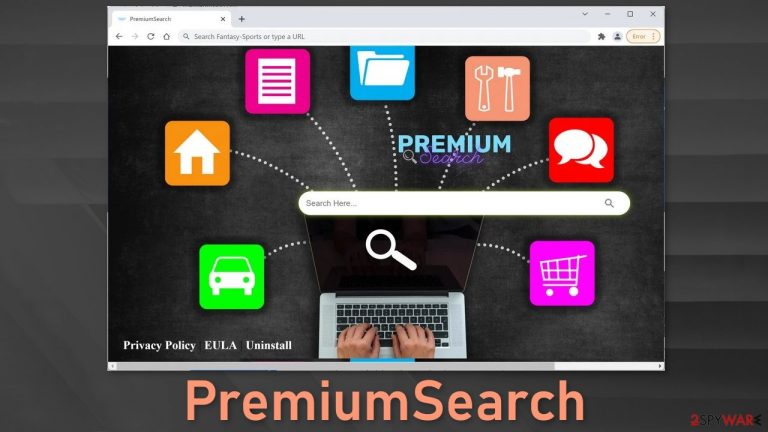
PremiumSearch is a browser hijacker that changes the main settings, like the homepage, new tab address, and search engine. It forces users to browse only through selected channels which raises many user privacy and security concerns. By keeping users in its' ecosystem, the web-based application can keep track of users' activities and collect various data.
Users who are infected with this extension may also experience an increased amount of commercial content, like pop-ups, banners, and redirects to questionable pages. As a result, users can end up on scam pages that try to trick them into providing personal information or downloading PUPs (potentially unwanted programs),[1] and malware.
You might ask what is the purpose of such an application? Well, the developers can monetize your activity by selling the collected data to advertising networks or other third parties. They can also generate revenue with PPC advertising every time you click on an ad placed by them.
The reality is, the plugin does not serve any other purpose besides being a revenue stream for shady individuals. Users do not benefit from having it at all. It does not offer any additional and valuable functionalities that are unavailable in default browsers.
| NAME | PremiumSearch |
| TYPE | Browser hijacker; potentially unwanted program |
| SYMPTOMS | The settings of the browser get changed, like the homepage, new tab address, and search engine |
| DISTRIBUTION | Shady websites, deceptive ads, redirects, freeware installations |
| DANGERS | The application can change all data on its pages and read users' browsing history |
| ELIMIINATION | Go to your browser settings to remove the extension responsible for unwanted behavior |
| FURTHER STEPS | Use a repair tool FortectIntego to fix any damage left after the intruder and to optimize the machine |
Because of a wide selection, people do not put much effort into researching browser extensions. Many do not think anything bad could happen. People are used to adding multiple plugins at once and seeing which ones fit. But when something goes wrong, many realize that they do not know how to remove them.
Usually, people want extensions that can block dangerous pages and ads or automatically apply the best coupons for the biggest discounts while shopping online. PremiumSearch just sets the default search engine to PremiumSearch Search and redirects users' search queries to it through premiumsearch.xyz.
It also changes the background picture, which does not add any functionalities as well. Be careful while surfing the web, and use only official web stores. Fraudsters will sometimes set up separate promotional websites for browser hijackers so never install something because you only saw an ad.
Often you may see claims that the product was developed in collaboration with Google, Apple, or Chrome, which you should never believe. If you see an advertisement for software that you really want, make sure to do your research first. You will find that if you search for the name of the hijacker, usually there are not many search results. You should choose an application that has plenty of reviews, good ratings, and at least hundreds of thousands of users worldwide.
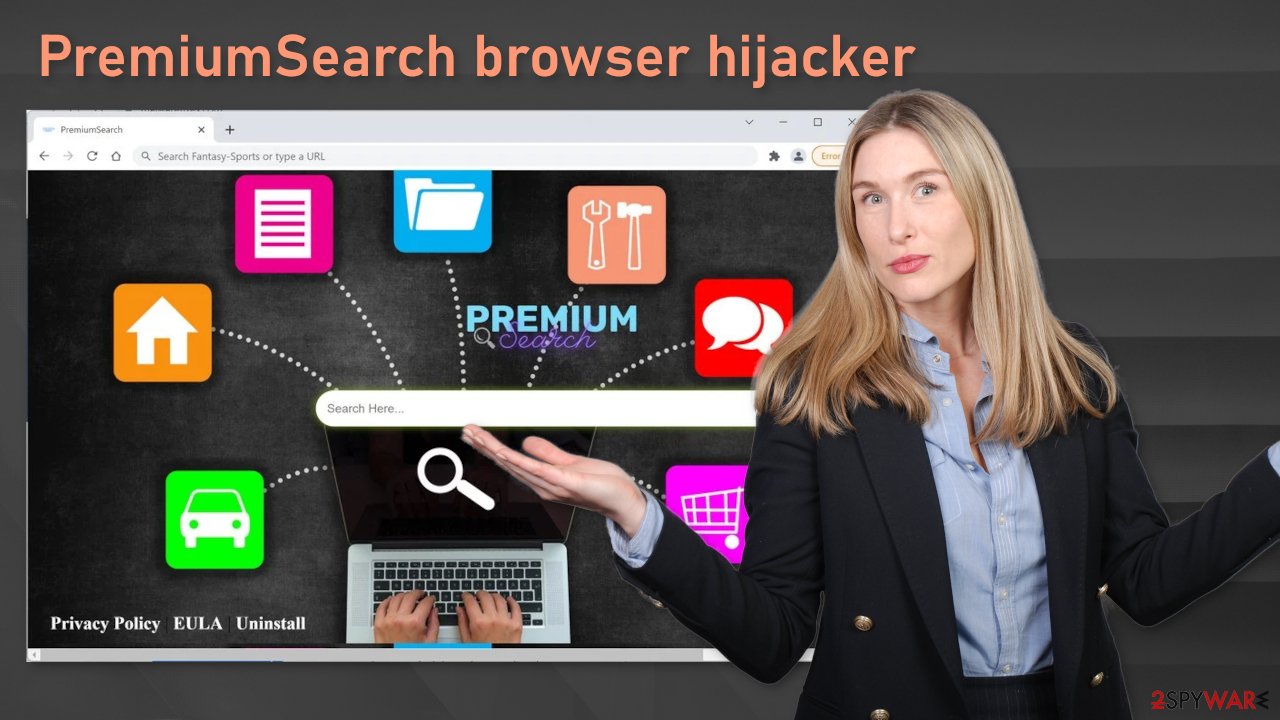
Start the removal via browser settings
You should first try to locate the extension responsible for the changes in your browser settings and move on to the next step:
Google Chrome
- Open Google Chrome, click on the Menu (three vertical dots at the top-right corner) and select More tools > Extensions.
- In the newly opened window, you will see all the installed extensions. Uninstall all the suspicious plugins that might be related to the unwanted program by clicking Remove.

MS Edge:
- Select Menu (three horizontal dots at the top-right of the browser window) and pick Extensions.
- From the list, pick the extension and click on the Gear icon.
- Click on Uninstall at the bottom.
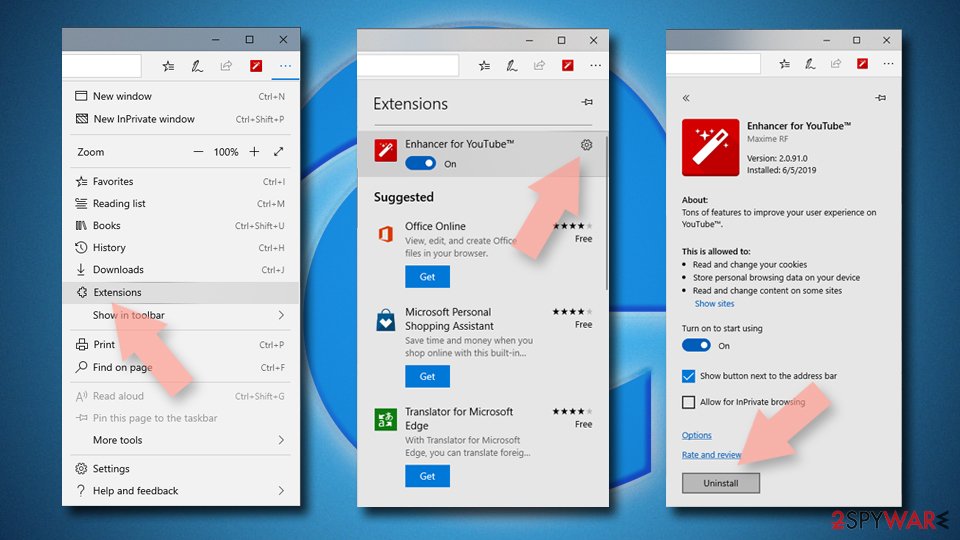
MS Edge (Chromium)
- Open Edge and click select Settings > Extensions.
- Delete unwanted extensions by clicking Remove.
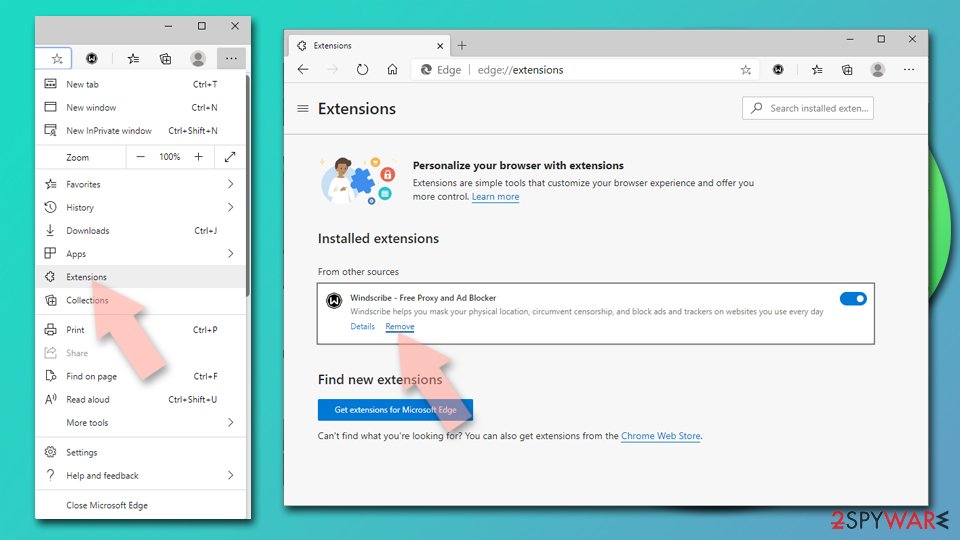
Mozilla Firefox
- Open Mozilla Firefox browser and click on the Menu (three horizontal lines at the top-right of the window).
- Select Add-ons.
- In here, select the unwanted plugin and click Remove.

Safari
- Click Safari > Preferences…
- In the new window, pick Extensions.
- Select the unwanted extension and select Uninstall.
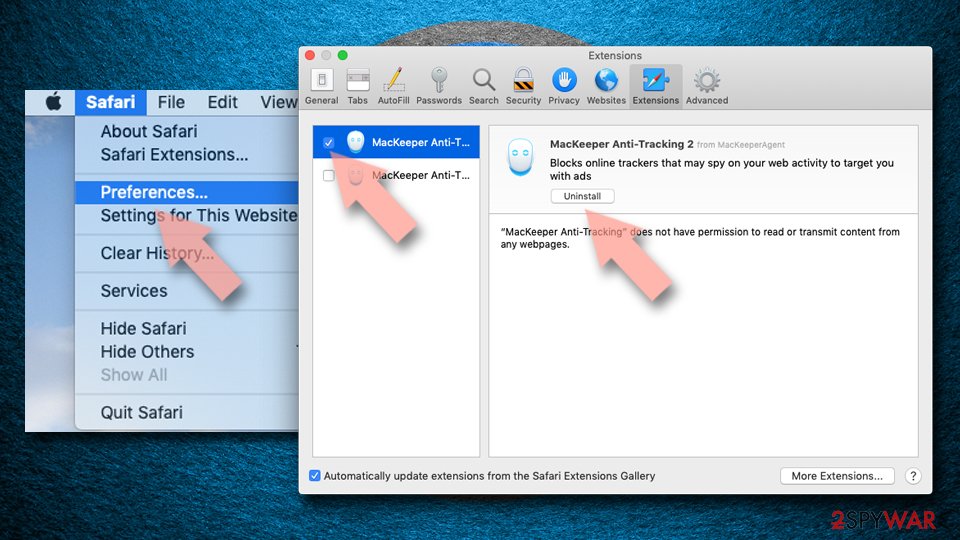
Internet Explorer:
- Open Internet Explorer, click on the Gear icon (IE menu) on the top-right corner of the browser
- Pick Manage Add-ons.
- You will see a Manage Add-ons window. Here, look for suspicious plugins. Click on these entries and select Disable.
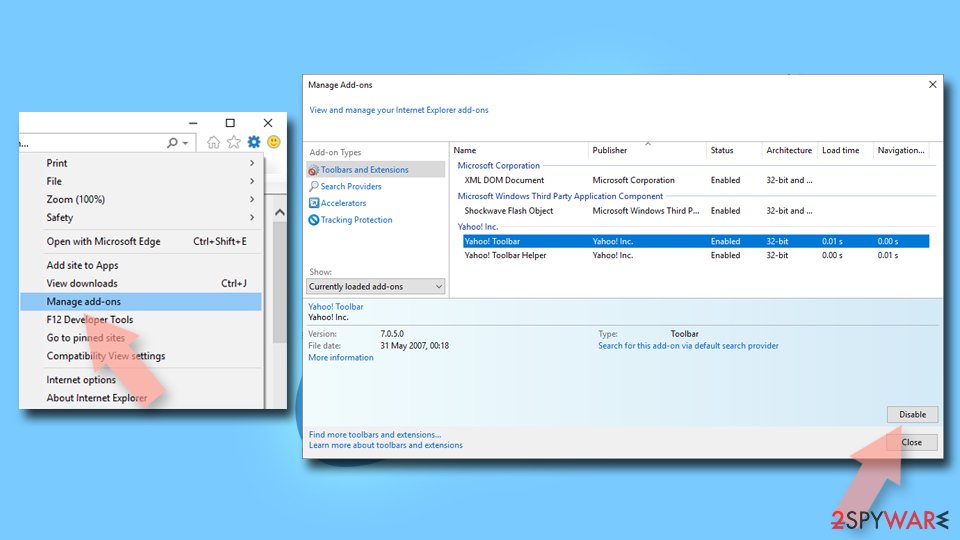
Clear your browsers
As we mentioned before, extensions can follow your activity with various tracking technologies, like cookies.[2] These parties can read your IP address, geolocation, websites you visit, links you click on, and things you purchase online. Although cookies are not inherently bad, if they end up in the wrong hands, your information can be used for purposes you do not like.
That is why security experts recommend clearing cookies and cache regularly. That can become a very annoying process so you can use a maintenance tool like FortectIntego that can do it automatically. Besides, this software can fix various system errors, corrupted files, and registry issues which is especially helpful after virus infections.
Find PUPs hiding in your machine
The first method may not have gotten rid of the symptoms completely. That is because there might be a PUA hiding in your system. The application can keep messing up your browser until you completely remove it from your device. Identifying the program responsible for the changed settings might be difficult if you have never done this before.
The program could be disguised as antivirus, system optimizer, or media player because they are most often installed from freeware[3] distribution sites. These platforms include additional programs in the installers without disclosing it in the hopes that most people will not notice. Unfortunately, that is exactly what happens most of the time.
If you want to avoid this happening in the future, you should always choose the “Custom” or “Advanced” installation method, read the Privacy Policy and Terms of Use. The most important part is to inspect the file list and uncheck the boxes next to any unrelated programs that you do not need. Of course, the best thing you can do is use official web stores and developer websites and not third parties.
Suppose you do not want to risk deleting the wrong files. In that case, we suggest using SpyHunter 5Combo Cleaner or Malwarebytes professional security tools that will scan your machine, eliminate it, and prevent such infections in the future by giving you a warning before a PUP can make any changes. If you prefer manual removal because you know what to do, we have instructions for Windows and Mac machines:
Windows 10/8:
- Enter Control Panel into Windows search box and hit Enter or click on the search result.
- Under Programs, select Uninstall a program.

- From the list, find the entry of the suspicious program.
- Right-click on the application and select Uninstall.
- If User Account Control shows up, click Yes.
- Wait till the uninstallation process is complete and click OK.

Windows 7/XP:
- Click on Windows Start > Control Panel located on the right pane (if you are a Windows XP user, click on Add/Remove Programs).
- In Control Panel, select Programs > Uninstall a program.

- Pick the unwanted application by clicking on it once.
- At the top, click Uninstall/Change.
- In the confirmation prompt, pick Yes.
- Click OK once the removal process is finished.
Mac:
- From the menu bar, select Go > Applications.
- In the Applications folder, look for all related entries.
- Click on the app and drag it to Trash (or right-click and pick Move to Trash)

To fully remove an unwanted app, you need to access Application Support, LaunchAgents, and LaunchDaemons folders and delete relevant files:
- Select Go > Go to Folder.
- Enter /Library/Application Support and click Go or press Enter.
- In the Application Support folder, look for any dubious entries and then delete them.
- Now enter /Library/LaunchAgents and /Library/LaunchDaemons folders the same way and terminate all the related .plist files.

How to prevent from getting browser hijacker
Stream videos without limitations, no matter where you are
There are multiple parties that could find out almost anything about you by checking your online activity. While this is highly unlikely, advertisers and tech companies are constantly tracking you online. The first step to privacy should be a secure browser that focuses on tracker reduction to a minimum.
Even if you employ a secure browser, you will not be able to access websites that are restricted due to local government laws or other reasons. In other words, you may not be able to stream Disney+ or US-based Netflix in some countries. To bypass these restrictions, you can employ a powerful Private Internet Access VPN, which provides dedicated servers for torrenting and streaming, not slowing you down in the process.
Data backups are important – recover your lost files
Ransomware is one of the biggest threats to personal data. Once it is executed on a machine, it launches a sophisticated encryption algorithm that locks all your files, although it does not destroy them. The most common misconception is that anti-malware software can return files to their previous states. This is not true, however, and data remains locked after the malicious payload is deleted.
While regular data backups are the only secure method to recover your files after a ransomware attack, tools such as Data Recovery Pro can also be effective and restore at least some of your lost data.
- ^ Chris Hoffman. PUPs Explained: What is a “Potentially Unwanted Program”?. HowToGeek. Technology Magazine.
- ^ What are Cookies?. Kaspersky. Home Security.
- ^ Freeware. Wikipedia. The free encyclopedia.
